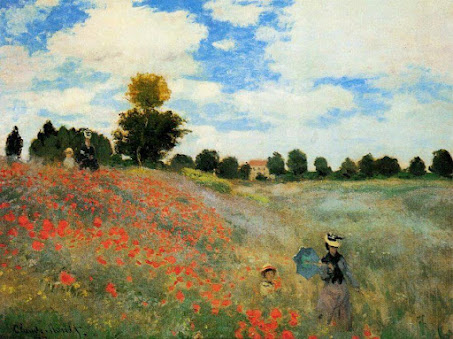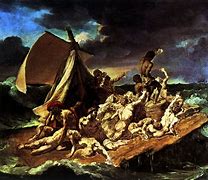Baroque Art: The Denial of St. Peter
The Denial of St. Peter
Caravaggio (1610)
This piece was painted by Caravaggio in 1610 towards the end of his artistic career while living in Naples. The painting depicts St. Peter, bathed in light, being accused of being a disciple of Christ by a woman and a Roman soldier. This piece was made by Caravaggio solely for his own desire, not because of a commission from any religious or noble figure.
The Baroque era came with certain changes in religious imagery. Whereas the Renaissance may have shown grandiose scenes of heavenly bounties or celebrated the achievements of humanity, religious art during the Baroque period took a far more realistic and dramatic approach as shown above. With the Counter Reformation in full swing following the Council of Trent, works like these became the norm, as a way to convey intended spiritual emotions. With the piece above, St. Peter is not portrayed as a virtuous, angelic follower of Christ, but merely a man, just as Caravaggio saw him.
The tone in the painting is very dramatic, making use of tenebrism (a heavy contrast between light and dark) to give the viewer a sense of discomfort and unease. The brightest light of the painting shines upon St. Peter, judging him for his actions. The least light shines upon the soldier, portraying him as an uncaring force that serves solely as a threat to the disciple and his allegiance.
I enjoy this painting quite a lot, I feel the use of tone and lighting are absolutely beautiful and work on many levels. The way the fireplace in the background burns dimly rather than emitting a contesting light to the one seen up front is so ominous, making it seem as if it is an extension of the soldier lying in darkness, testing St. Peter. The realistic portrayal of the subjects is also something I greatly enjoy, and find more emotionally compelling than past, dry portrayals of humans.
Bibliography
Staticflickr.com, 2022, live.staticflickr.com/7304/9807158933_3ac69e495d_b.jpg.
“Caravaggio’s the Denial of St. Peter.” www.ukessays.com, www.ukessays.com/essays/religion/the-denial-of-saint-peter.php.
Metmuseum.org, 2020, www.metmuseum.org/art/collection/search/437986.



Hello, Christopher! I love how Caravaggio uses contrast so dramatically in his art. I think he is a master at striking the viewer. His art reaches into you. You say you prefer portrayals of people to be more “emotionally compelling," and I think that’s something fantastic about Baroque art. It is realistic in a way that speaks to a viewer’s heart.
ReplyDeleteI also think this painting speaks so well to the times. The influence of the Council of Trent was massive, and the subject matter and portrayal match it. We learned that the Council of Trent focused on emotional, realistic art. The art was supposed to spread the message of Christianity with clarity. The expressions in this painting are so clear. Additionally, you point out that the brightest light shines on Peter. For me, that elicits the feeling of being put on the spot. Maybe you knew what you wanted to say at some point, but being put on the spot can turn you into a coward. You might say anything to get the spotlight off of you, whether or not you mean it. Words said are harder to take away than words unsaid. St. Peter’s denial is significant because his first denial portrays a stark contrast to his known character. He goes on to deny two more times, and each denial is “worse” than the previous one. Now, there are four canonized Gospels, and the Gospel of John gives Peter a redemption scene. In it, Jesus asks Peter three times if he loves him. I’ll include a link with further explanation on the topic.
https://aleteia.org/2019/05/05/why-did-jesus-ask-peter-do-you-love-me-three-times/
Hello, thank you for sharing! I do not particularly enjoy the light in this painting. I think it is very dark, and it is hard to make out the faces of the individuals in the image. I believe the tone and lighting add to the theme of the painting because it gives an ominous feel. There is almost a suspenseful feeling that emits from the image because of the shading used.
ReplyDeleteThe Denial of Saint Peter is a Baroque painting by multiple artists that depicts the biblical scene of Saint Peter denying Jesus. The paintings are characterized by dramatic use of light and shadow, and realistic portrayals of human emotion.
ReplyDelete😊To excel in the pharmaceutical representative job search, start by obtaining a relevant degree and networking within the industry. Customize your resume and cover letter, highlighting your product knowledge and communication skills. Research companies thoroughly and consider informational interviews. Stay persistent and informed about industry trends to enhance your chances of securing a position.newstap